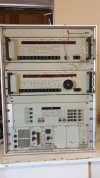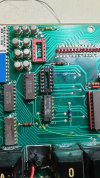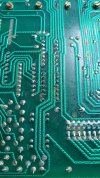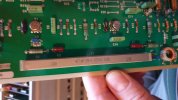Hi!
My name is Alexander, I hope it's not a problem to write in English?
I have a CR90 radio receiver that I'm trying to repair but unfortunately I can't find wiring diagrams anywhere.
Maybe someone isn't here?
The DC-DC converter card in the device is not good, unfortunately it was not made by someone original. When I fix it, the device turns on, a couple of basic LEDs light up but don't come to life unfortunately. Pressing the buttons changes things on the display but does not respond as it should.
Thanks!
My name is Alexander, I hope it's not a problem to write in English?
I have a CR90 radio receiver that I'm trying to repair but unfortunately I can't find wiring diagrams anywhere.
Maybe someone isn't here?
The DC-DC converter card in the device is not good, unfortunately it was not made by someone original. When I fix it, the device turns on, a couple of basic LEDs light up but don't come to life unfortunately. Pressing the buttons changes things on the display but does not respond as it should.
Thanks!




